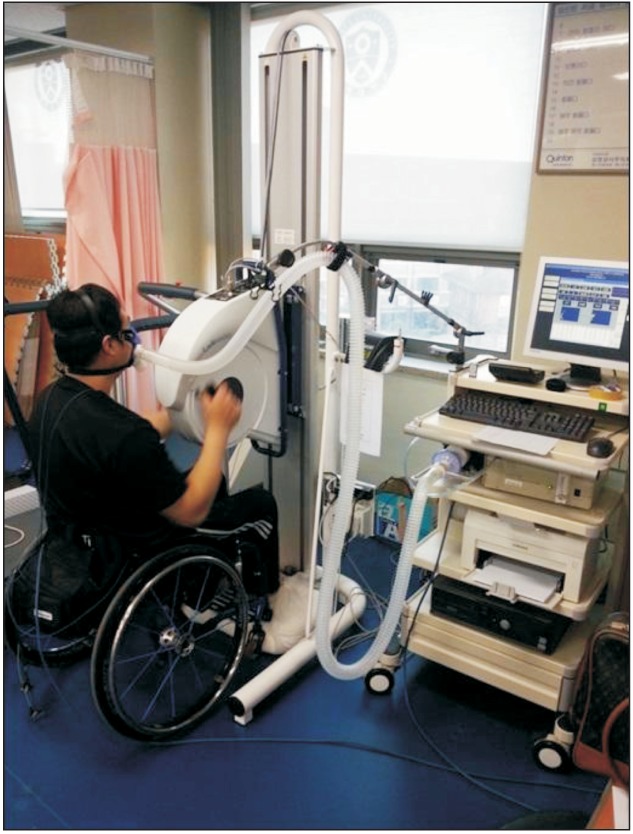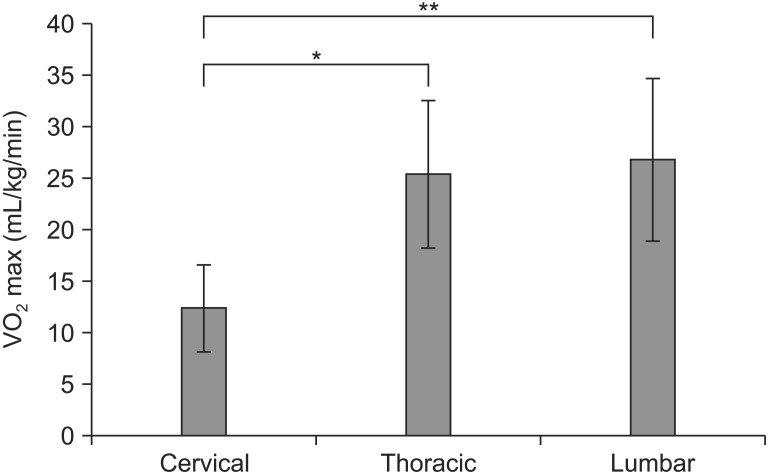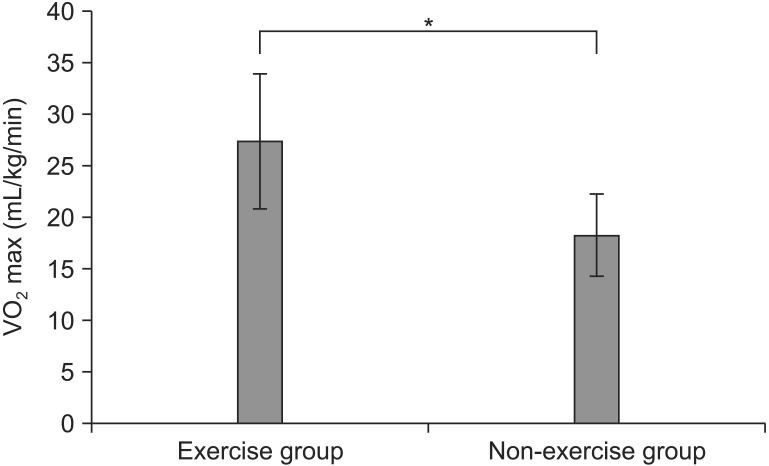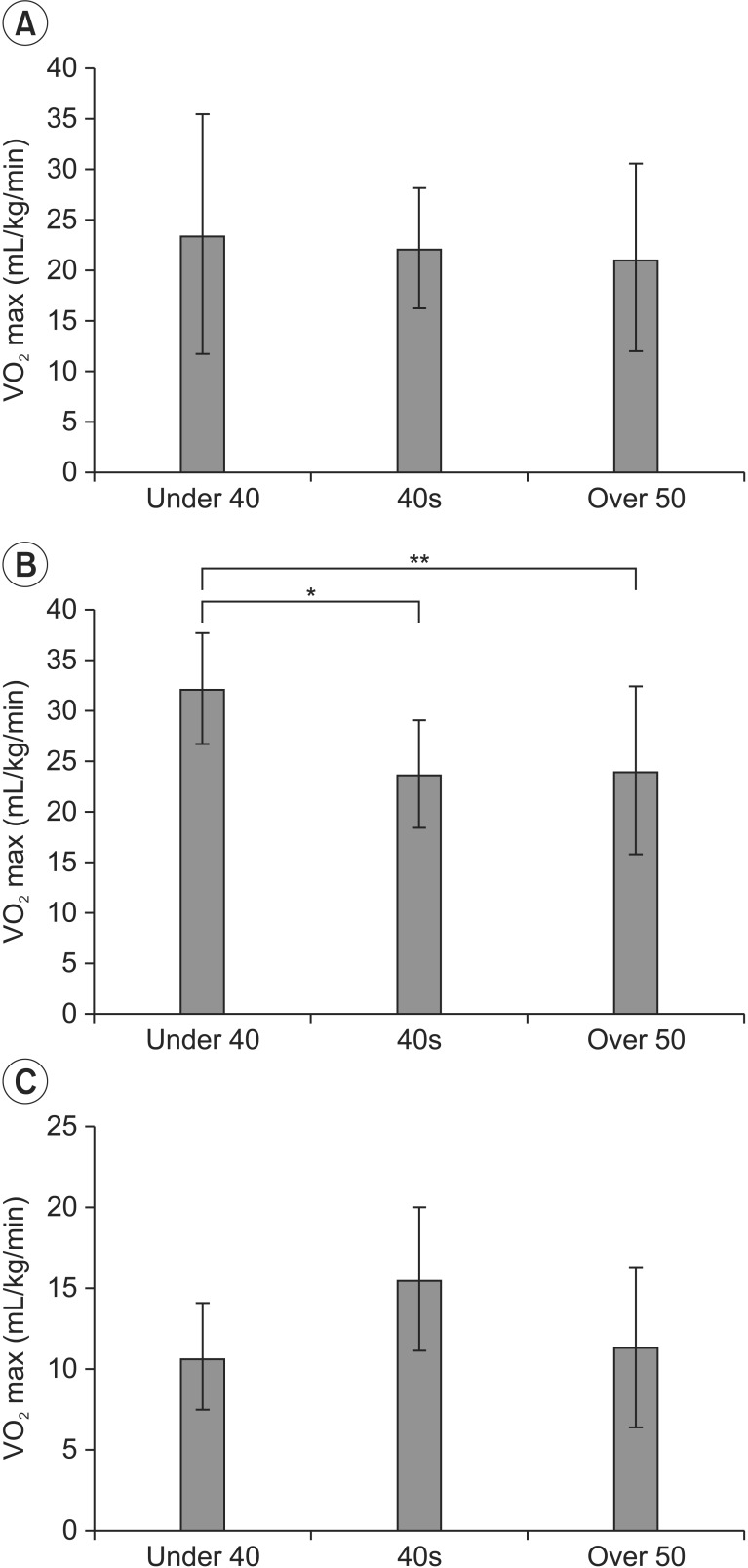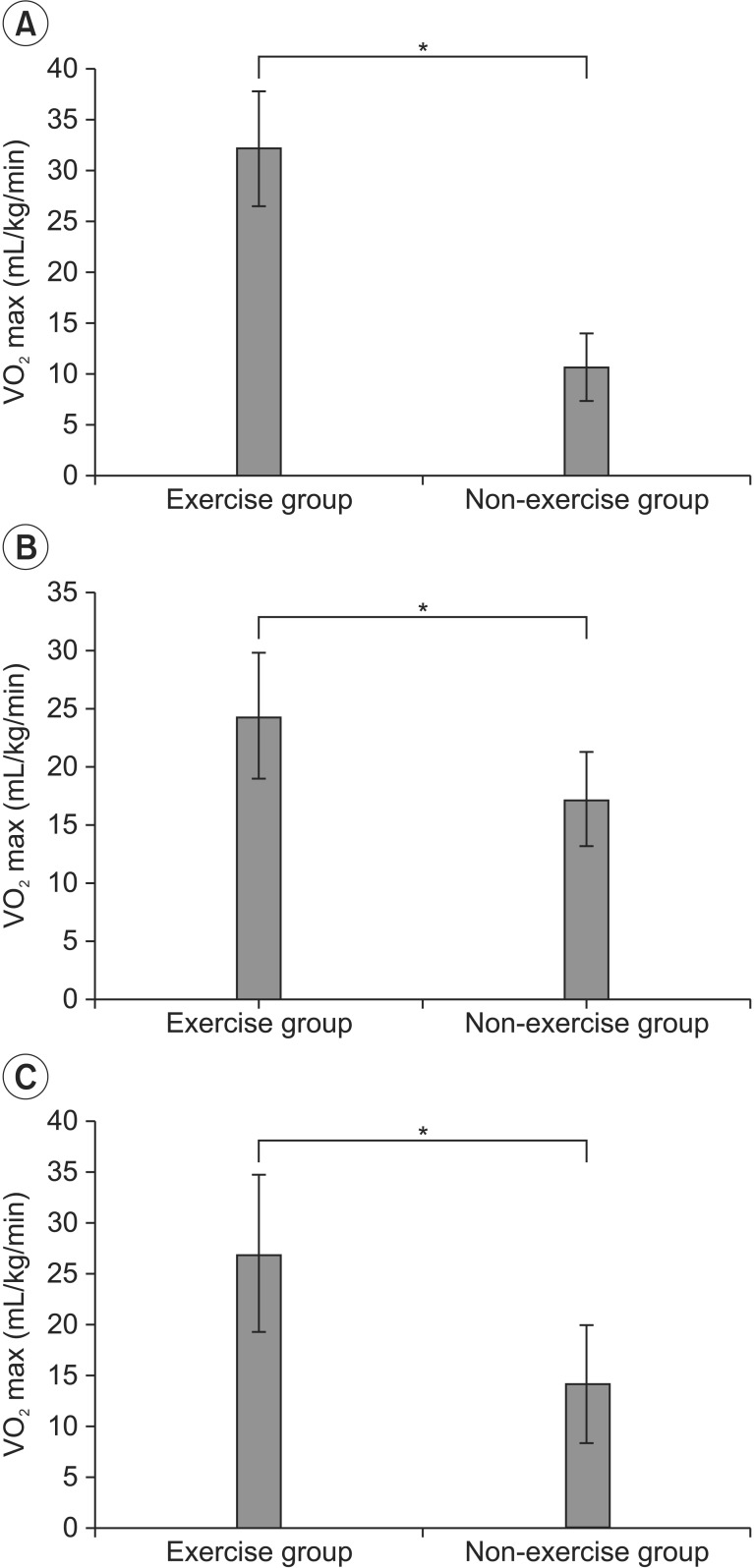Ann Rehabil Med.
2015 Feb;39(1):91-99. 10.5535/arm.2015.39.1.91.
Effect of Regular Exercise on Cardiopulmonary Fitness in Males With Spinal Cord Injury
- Affiliations
-
- 1Department of Rehabilitation Medicine, Yonsei University Wonju College of Medicine, Wonju, Korea. topkjoh@hanmail.net
- 2Center for Exercise Medicine, Yonsei University, Wonju, Korea.
- 3Department of Physiology, Yonsei University Wonju College of Medicine, Wonju, Korea.
- KMID: 2273024
- DOI: http://doi.org/10.5535/arm.2015.39.1.91
Abstract
OBJECTIVE
To evaluate the cardiopulmonary endurance of subjects with spinal cord injury by measuring the maximal oxygen consumption with varying degrees of spinal cord injury level, age, and regular exercise.
METHODS
We instructed the subjects to perform exercises using arm ergometer on healthy adults at 20 years of age or older with spinal cord injury, and their maximal oxygen consumption (VO2max) was measured with a metabolic measurement system. The exercise proceeded stepwise according to the exercise protocol and was stopped when the subject was exhausted or when VO2 reached an equilibriu
RESULTS
Among the 40 subjects, there were 10 subjects with cervical cord injury, 27 with thoracic cord injury, and 3 with lumbar cord injury. Twenty-five subjects who were exercised regularly showed statistically higher results of VO2max than those who did not exercise regularly. Subjects with cervical injury showed statistically lower VO2max than the subjects with thoracic or lumbar injury out of the 40 subjects with neurologic injury. In addition, higher age showed a statistically lower VO2max. Lastly, the regularly exercising paraplegic group showed higher VO2max than the non-exercising paraplegic group.
CONCLUSION
There are differences in VO2max of subjects with spinal cord injury according to the degree of neurologic injury, age, and whether the subject participates in regular exercise. We found that regular exercise increased the VO2max in individuals with spinal cord injury.
Figure
Reference
-
1. Lee HS, Park YO. A study on cause of death and length of survival for patients with spinal cord injury. J Korean Acad Rehabil Med. 1994; 18:570–575.2. Park DS, Lee BS, Kim M. A comparison of oxygen consumption test with a motor-driven rowing and arm ergometer in the patients with spinal cord injury. J Spec Educ Rehabil Sci. 2011; 50:385–398.3. Kim KY, Shin SB. Evaluation of cardiopulmonary function and serum lipid profile in spinal cord injured patients. J Korean Acad Rehabil Med. 2006; 30:236–240.4. Grange CC, Bougenot MP, Groslambert A, Tordi N, Rouillon JD. Perceived exertion and rehabilitation with wheelchair ergometer: comparison between patients with spinal cord injury and healthy subjects. Spinal Cord. 2002; 40:513–518. PMID: 12235533.
Article5. Park HM, Kim YJ, Kim YY, Kim YM, Kim JS, Lee BR, et al. Cardiorespiratory responses to maximal exercise loading in Korean adults: with particular reference to maximal oxygen uptake, cardiac response and criteria for classification of cardiorespiratory fitness. Korean J Phys Educ. 1993; 32:2329–2346.6. Sutbeyaz ST, Koseoglu BF, Gokkaya NK. The combined effects of controlled breathing techniques and ventilatory and upper extremity muscle exercise on cardiopulmonary responses in patients with spinal cord injury. Int J Rehabil Res. 2005; 28:273–276. PMID: 16046923.
Article7. Jacobs PL, Nash MS. Exercise recommendations for individuals with spinal cord injury. Sports Med. 2004; 34:727–751. PMID: 15456347.
Article8. Devillard X, Rimaud D, Roche F, Calmels P. Effects of training programs for spinal cord injury. Ann Readapt Med Phys. 2007; 50:490–498. 480–489. PMID: 17482709.9. Claydon VE, Hol AT, Eng JJ, Krassioukov AV. Cardiovascular responses and postexercise hypotension after arm cycling exercise in subjects with spinal cord injury. Arch Phys Med Rehabil. 2006; 87:1106–1114. PMID: 16876557.
Article10. Uth N, Sorensen H, Overgaard K, Pedersen PK. Estimation of VO2max from the ratio between HRmax and HRrest: the Heart Rate Ratio Method. Eur J Appl Physiol. 2004; 91:111–115. PMID: 14624296.
- Full Text Links
- Actions
-
Cited
- CITED
-
- Close
- Share
- Similar articles
-
- Evaluation of Cardiopulmonary Function and Serum Lipid Profile in Spinal Cord Injured Patients
- Effects of Paraplegia Fitness Integrated Training on Physical Function and Exercise Self-Efficacy and Adherence Among Individuals With Spinal Cord Injury
- Hemodynamic Adaptations to Regular Exercise in People With Spinal Cord Injury
- Effects of Graded Exercises Integrated with Education on Physical Fitness, Exercise Self-Efficacy, and Activity Levels in People with Spinal Cord Injury: A Quasi-Experimental Study Protocol
- Sexuality of Unmarried Males with a Spinal Cord Injury

